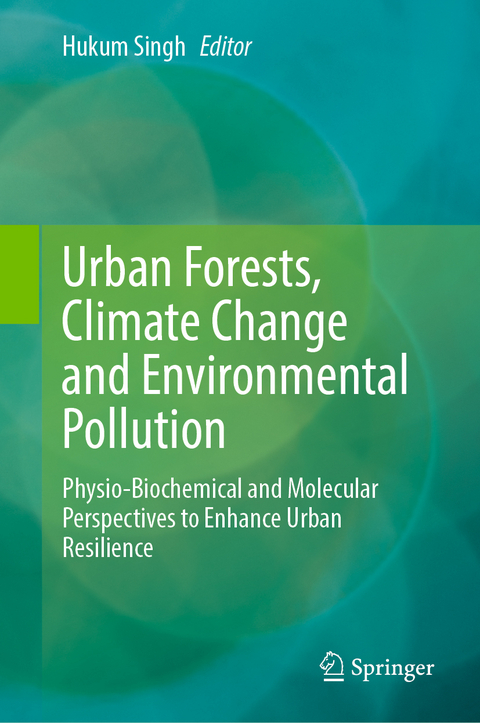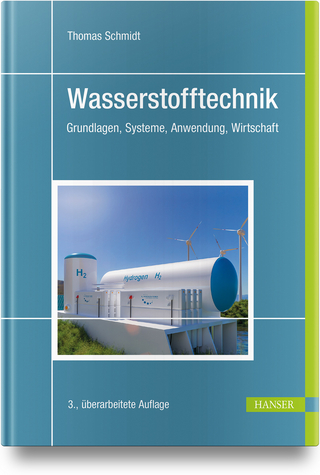
Urban Forests, Climate Change and Environmental Pollution
Springer International Publishing (Verlag)
978-3-031-67836-3 (ISBN)
This book contributes significantly to the international literature by bringing forth a novel and comprehensive exploration of urban resilience in the face of climate change and environmental pollution. Its focus on integrating physiological, biochemical, and molecular dimensions distinguishes it from existing literature.
The book offers several key contributions, including an interdisciplinary approach to understanding the complex interactions within urban ecosystems. It includes cutting-edge insights that have not been extensively explored in existing literature, practical applications, and evidence-based strategies to enhance urban sustainability and resilience. The book has a global relevance to a diverse international readership and provides strategic guidance to policymakers and urban planners when making decisions to develop evidence-based strategies that cater to the specific challenges of cities.
Urban forests play a critical role in enhancing the resilience of cities by providing numerous benefits, including improved air quality, reduced urban heat island effect, and enhanced biodiversity, ultimately improving urban health. Besides, urban forests are a crucial natural-based solution (NbS) to mitigate air pollution and climate change impacts in cities. However, in the face of climate change and environmental pressures, urban forests face significant challenges to their survival and functionality. This book explores the complex morpho-physio-biochemical and molecular changes that enable urban forests to flourish amidst climate change and environmental pollution. It examines how urban trees modulate their morphological structures, including root systems and physiological and biochemical functioning, and molecular alterations to withstand changing urban climatic and environmental conditions.
Hukum Singh is a forest physiology and climate change scientist associated with the Forest Research Institute in Dehradun, India. His research covers eco-physiology, plant responses to abiotic stresses, climate-smart forestry, climate change adaptation and mitigation, urban pollution, urban forestry, and more.
Chapter 1. Climate Change and Environmental Pollution: Biological Consequences on Urban Forests.- Chapter 2. Urban Forests: Importance, Challenges and Opportunities.- Chapter 3. Urbanization and Climate Change: Impacts, Adaption and Mitigation Strategies.- Chapter 4. Biological Insights into the Adaptive Responses of Medicinal Plants to Changing Urban Environments.- Chapter 5. Unraveling Urban Plant Strategies for Heavy Metal Uptake and Detoxification.- Chapter 6. Tree species suitability for adapting to urban air pollution and climate change.- Chapter 7. Phenological Shifts in Forest Ecosystems: A Strategic Response to Climate Change and Environmental Stress.- Chapter 8. Understanding the Impact of Climate Change and Environments on Urban Forests: Insights from Morphological, Physiological, and Molecular Perspectives.- Chapter 9. Unveiling the Arboreal Responses to Edaphic Factors in Urban Forest Ecosystems.- Chapter 10. Alteration in Biochemical and Molecular Expression of Trees in Response to Changing Climatic and Environmental Pollution.- Chapter 11. Plant growth regulators/promoters mediated adaptation and tolerances in urban plants for enhancing resilience towards multiple stresses.- Chapter 12. Enhancing Adaptation and Stress Tolerance in Urban Plants through Plant Growth-Promoting Rhizobacteria (PGPR).- Chapter 13. Enhancing Urban Sustainability through Heavy Metal Extraction: Mechanisms, Challenges, and Environmental Impact.- Chapter 14. Urban Tree Responses to Climate Change and Environmental Pollution.- Chapter 15. Biological Insights into Forest Adaptation to Climate Change: Ecosystem Resilience and Adaptation.- Chapter 16. Unraveling the Tapestry of Plant Phenology in the Face of Climate Change and Environmental Stress.- Chapter 17. Role of Urban Forests in Modulating Urban Climate.- Chapter 18. Urban Forests and Carbon Sequestration.- Chapter 19. Urban Tree Selection and Management Strategies for Climate Adaptation.- Chapter 20. Ecosystem services provided by urban and peri-urban forests.- Chapter 21. Ecosystem Services and Maintaining Their Flow in Urban Environments: Nurturing Sustainable Flow in Urban Environments.- Chapter 22. Advancing Urban Forest Resilience: Strategies, Challenges, and Innovations in the Face of Climate and Environmental Change.- Chapter 23. Urban Forests: Benefits, Barriers, and Sustainable Solutions.- Chapter 24. Stubble Burning and Urban Environmental Pollution: Impacts and Control Measures.- Chapter 25. Urban Forests and Microclimate Regulation.- Chapter 26. The Potential of People's Engagement by Green Taxation to Maintain Urban Green Space.- Chapter 27. Biotechnological Innovations in Urban Forestry: Adapting and Mitigating Climate Change and Environmental Pollution.- Chapter 28. Molecular and Gene Expression in Plants under Climate Change and Urban Environment.- Chapter 29. Molecular insights into the modulation of gene expression in trees under abiotic stresses.- Chapter 30. Biological Consequences of Cell Phone Radiation on Plants in Urban Environments.- Chapter 31. Consequences of Artificial Light at Night (ALAN) on Urban Tree Functioning: A Case Study.- Chapter 32. Understanding the Carbon Sequestration Potential of Urban Gardens and Parks: Implications for Sustainable Urban Planning and Environmental Conservation.- Chapter 33. Role of Urban Trees in Minimizing the Atmospheric Carbon Dioxide Level of the Megacity of Kolkata, India.- Chapter 34. Adaptive Strategies of Quercusleucotrichophora in Different Environmental Gradients: Modulations in Leaf Biophysical and Biochemical Functional Traits.- Chapter 35. Examining Turgor Maintenance Mechanisms in Rhododendron arboreum and Quercus lanata within Shivapuri Nagarjun National Park, Nepal.- Chapter 36. Regulation of Ambient Air Temperature through Trees: A Comparison between Industrial and Rural Belt in the State of West Bengal, India.- Chapter 37. Hydrological Variability in Indian Forest Ecosystem: Analysis of Drought Resilience, Recovery and Water Use Efficiency in Moist and Dry Deciduous Forests.- Chapter 38. Climate Change-Induced Forest Ecosystem Functioning and Alteration in Water-Atmosphere-Soil-Plant (WASP) Relationship.- Chapter 39. Climate-Induced Changes in Forest Ecosystems of Indian Himalayan Region: A Meta-Analysis.- Chapter 40. Policies, Strategies, and Regulatory Framework for Sustainable Urban Forest Management.
| Erscheinungsdatum | 05.12.2024 |
|---|---|
| Zusatzinfo | XIII, 882 p. 129 illus., 125 illus. in color. |
| Verlagsort | Cham |
| Sprache | englisch |
| Maße | 155 x 235 mm |
| Themenwelt | Naturwissenschaften ► Biologie ► Ökologie / Naturschutz |
| Weitere Fachgebiete ► Land- / Forstwirtschaft / Fischerei | |
| Schlagworte | Climate change impacts • Climate resilient urban planning • Policy interventions • Sustainable Urban Development • Urban ecosystems and urbanisation • Urban ecosystem services • Urban plant physiology |
| ISBN-10 | 3-031-67836-2 / 3031678362 |
| ISBN-13 | 978-3-031-67836-3 / 9783031678363 |
| Zustand | Neuware |
| Informationen gemäß Produktsicherheitsverordnung (GPSR) | |
| Haben Sie eine Frage zum Produkt? |
aus dem Bereich


